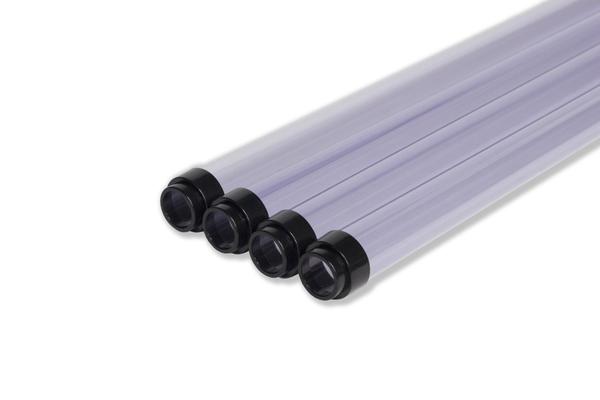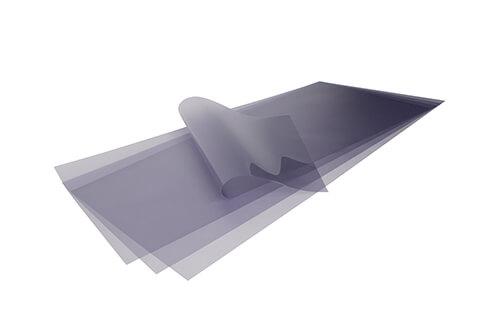LED vs. Fluorescent Bulbs
There really is no comparison when you look at LED vs. fluorescent bulbs. LED, or light emitting diode, bulbs are less impactful to the environment, more durable, and incredibly energy efficient. Make Great Light makes NaturaLux filters that make your indoor environment seem like you’re bathing in natural sunlight – without the ultraviolet radiation that comes from fluorescent lighting. Here’s a brief look at what fluorescent lighting and LED lighting are, as well as the many advantages of LEDs.
What are Fluorescent Lights?
A fluorescent lamp, or fluorescent tube, is a gas-charged lamp that produces light by means of an electrical charge and a chemical reaction that involves gases and mercury vapor. The gases and vapors interact to produce radiant energy known as ultraviolet (UV) light inside of a glass tube. The UV light causes a phosphor powder coating on the inner walls of the glass tube to glow and emit a white “fluorescent” light.
In general, fluorescent bulbs will last 10 to 20 times longer than traditional bulbs and give off about two-thirds to three-quarters less heat than incandescent bulbs. Although fluorescent bulbs are more energy-efficient than their incandescent predecessors, they present a variety of potential risks.
What are LED Lights?
The diode in an LED light is basically a tiny electrical device. It contains an anode and a cathode, which are electrodes. When electricity flows through the diode, that creates light. Diodes usually contain substances, such as selenium or silicon, that serve as semiconductors. That means they conduct electricity.
As the current passes through the semiconductors, that creates light.
Why are LED Lights Better?
LED lights hold four major advantages over fluorescent lights. Here’s a quick look at all of them.
- LED lights last much, much longer than CFLs, or any other kind of lighting, for that matter. The newest LEDs on the market can last anywhere from 50,000 to 100,000 hours – or even longer. Fluorescent bulbs typically last anywhere from 10-25 percent less than that.
- Energy efficiency is another area where LED lights outperform fluorescent lights. They don’t waste a lot of energy through radiation. You can get the same amount of light from a 7- to 10-watt LED light than you can get from an 18-watt fluorescent light.
- You also won’t have to deal with flickering, like you do with fluorescent lights. This can be extremely irritating to anyone who has so sit under fluorescent lighting for an extended period of time, like in a classroom or an office. LEDs also turn on instantly. They don’t need time warm up to achieve maximum brightness.
- LEDs give you more flexibility when it comes to creating a certain type of atmosphere, or mood, in your indoor space. Fluorescent lights, on the other hand, only give you one option – a type of dull, lifeless light. Colors are more natural under LED light than they are under fluorescent lights.
As a bonus, since LEDs don’t contain mercury, they won’t emit potentially poisonous vapors if they break. If a fluorescent bulb breaks, that could be a major problem
Talk to the Experts With Make Great Light to Learn More
Get in touch with Make Great Light for more information on LED vs. fluorescent bulbs and the benefits of our NaturaLux filters. Contact us online or call 612-399-6484.
Light Filters
Products
Fluorescent tube covers are versatile, durable solution for standard 4′ fluorescent lamps.
Fluorescent light covers are designed to cover fixtures that are flush to the ceiling. Works with LED too.
Blue Light Screen Filter: Practical Options, Evidence, And Lighting Fixes For Real-World Spaces
Blue light screen filter guide: what it can and can’t do, how to choose, cut eye strain, improve sleep, and overhead lighting with NaturaLux filters matters.
Fluorescent Light Filters For Migraines: Evidence, Options, And Safer Lighting
Fluorescent light filters for migraines that diffuse glare soften blue peaks, and block UV—making offices and schools calmer. Engineer‑designed, easy install.
The Ultimate Guide to Cubicle Lighting: Illuminate Your Workspace Efficiently
Lighting plays a pivotal role in setting the mood, enhancing productivity, and ensuring the overall well-being of workers. In a

